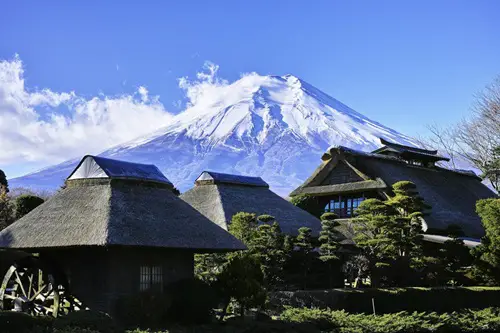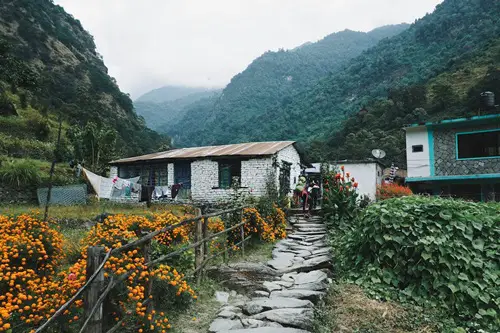
In this article, we will investigate the main 10 most noteworthy mountains on the planet, each with its own novel charm and treacherous excellence.
The world is graced with remarkable mountain goes that allure swashbucklers and mountain climbers to test their cutoff points and arrive at new levels. These magnificent pinnacles, overshadowing the mists, offer a stunning test for those looking for a definitive mountaineering experience.
Mount Everest, Nepal/Tibet:

Standing tall at a stunning level of 8,848 meters (29,029 feet), Mount Everest rules as the most elevated top on The planet. Situated on the Nepal-Tibet line, this notorious mountain has enthralled the creative mind of pilgrims and climbers for quite a long time. Vanquishing Everest is a definitive accomplishment for mountain climbers, yet it requests uncommon expertise, assurance, and meticulous preparation.
K2, Pakistan/China:
K2, otherwise called Mount Godwin-Austen or Chhogori, is the second-most noteworthy mountain on the planet, remaining at a dazzling rise of 8,611 meters (28,251 feet). Situated on the China-Pakistan line in the Karakoram Scope of the Himalayas, K2 is famous for its outrageous trouble and treacherous climbing conditions. Here is a thorough outline of this notable pinnacle:
Geology and Area: K2 is arranged in the Baltistan locale of the Karakoram Reach, which traverses the boundaries of Pakistan, China, and India. It lies around 237 kilometers (147 miles) upper east of Skardu, the capital of the Baltistan locale in Pakistan. The mountain is important for the bigger Karakoram Reach, which is known for its tough territory, transcending tops, and glaciated scenes.
Climbing History: The main effective rising of K2 was made on July 31, 1954, by an Italian undertaking drove by Ardito Desio. The highest point group included Lino Lacedelli and Achille Compagnoni, who arrived at the top through the Abruzzi Spike course on the southeast side of the mountain. From that point forward, K2 has procured a standing as perhaps of the deadliest mountain on the planet, with a notoriously low culmination achievement rate and a high casualty rate among climbers.
Courses to the Culmination: K2 offers a few climbing courses, each introducing its own arrangement of difficulties and risks. The most usually used course is the Abruzzi Spike, which follows the southeast edge of the mountain from the Godwin-Austen Ice sheet. Different courses incorporate the Cesen Course, the North Edge, and the West Edge, each expecting climbers to explore steep slants, icefalls, chasms, and torrential slide inclined territory.
Climbing Difficulties: K2 is famous for its outrageous trouble and flighty atmospheric conditions, which can change quickly and all of a sudden. Climbers face a horde of difficulties, including outrageous cool, high breezes, low oxygen levels, and specialized climbing impediments like icefalls, seracs, and rockfall. The mountain’s far off area and restricted strategic help further add to the intricacy and risk of getting over undertakings.
Social and Regular Importance: K2 holds social and otherworldly importance for individuals of the Baltistan locale, who allude to the mountain as “Chhogori” or “The Lord of Mountains.” It is essential for the customary grounds of the Balti public, who have a profound social association with the mountain and encompassing scene. K2 and its encompassing region brag dazzling regular excellence, with transcending tops, profound valleys, and perfect ice sheets, making it a famous objective for travelers and globe-trotters trying to encounter the remarkable glory of the Karakoram Reach.
Undertakings and The travel industry: Notwithstanding its outrageous trouble and risk, K2 draws in mountain dwellers and globe-trotters from around the world trying to test their abilities and perseverance in high-elevation getting over. The mountain is a sought after prize for first class climbers, with just a little level of the people who endeavor to highest point it succeeding. Business campaigns and directed climbs are accessible, offering experienced climbers the valuable chance to handle one of the world’s most difficult tops fully backed up by experienced guides and strategic help. Also, the district encompassing K2 is eminent for its traveling courses, furnishing adventurers with the valuable chance to investigate the shocking scenes and social legacy of the Karakoram Reach.
Kangchenjunga, Nepal/India:

With a height of 8,586 meters (28,169 feet), Kangchenjunga is the third-most elevated mountain around the world and the most noteworthy in India. Situated in the eastern Himalayas, this superb pinnacle is known for its dazzling magnificence and testing territory. Its distant area and unusual weather conditions make it an imposing endeavor for climbers.
Lhotse, Nepal/Tibet:
Contiguous Mount Everest, Lhotse stands gladly at 8,516 meters (27,940 feet). The fourth-most noteworthy mountain on the planet, Lhotse is eminent for its sensational south face, which presents an overwhelming test to climbers. Many mountain dwellers endeavor to highest point Lhotse as a component of their Everest undertakings.
Makalu, Nepal/Tibet:
Makalu, arriving at a level of 8,485 meters (27,838 feet), is the fifth most noteworthy pinnacle universally. Arranged in the Mahalangur Himalayas, this pyramid-molded mountain draws in experienced climbers searching for an impressive and technically requesting rising.
Cho Oyu, Nepal/Tibet:
Cho Oyu, transcending at a height of 8,188 meters (26,864 feet), is the 6th most elevated mountain on the planet. It is situated on the line among Nepal and Tibet, in the Mahalangur Himal scope of the Himalayas. Here is an outline of this famous pinnacle:
Topography and Area: Cho Oyu is arranged in the Himalayas, riding the line among Nepal and Tibet. Its name means “Turquoise Goddess” in Tibetan, alluding to the dynamic shade of the mountain’s ice and snow. Cho Oyu lies roughly 20 kilometers west of Mount Everest, with which it has a similar Himalayan massif.
Climbing History: The main effective rising of Cho Oyu was made on October 19, 1954, by an Austrian undertaking drove by Herbert Tichy. The group included Pasang Dawa Lama, Ernst Forrer, and Joseph Jöchler. Cho Oyu is viewed as one of the simpler 8,000-meter tops to move, with generally clear courses and less specialized trouble contrasted with other Himalayan monsters. Notwithstanding, it actually presents critical difficulties because of its outrageous height and flighty weather patterns.
Courses to the Culmination: A few courses lead to the highest point of Cho Oyu, with the most usually used being the northwest edge course from the Tibetan side. This course follows the West Rongbuk Icy mass and includes laying out different high camps prior to making the last push to the culmination. Climbers typically face difficulties like chasms, icefalls, and high breezes, especially in the upper compasses of the mountain.
Social and Regular Importance: Cho Oyu holds social importance for the Tibetan public, who venerate the mountain as a sacrosanct god. It is essential for the conventional terrains of the Sherpa and Tibetan people group, who have profound social connections to the Himalayas. Cho Oyu and its encompassing region gloat staggering regular magnificence, with immaculate elevated scenes, flowing glacial masses, and various verdure. The area is likewise home to a few Buddhist cloisters and social destinations, adding to its social lavishness and profound importance.
Campaigns and The travel industry: Cho Oyu draws in mountain dwellers and explorers from around the world trying to test their abilities and perseverance in high-height getting over. The mountain is a famous objective for business campaigns and directed gets over, offering experienced climbers the potential chance to culmination one of the world’s most noteworthy tops fully backed up by experienced guides and strategic help. Moreover, the district encompassing Cho Oyu is prestigious for its traveling courses, giving adventurers the amazing chance to encounter the stunning magnificence of the Himalayas firsthand.
Dhaulagiri, Nepal:
Dhaulagiri, transcending at a great rise of 8,167 meters (26,795 feet), is a magnificent mountain situated in the core of the Himalayas in Nepal. Its name, “Dhaulagiri,” means “White Mountain” in Nepali, which suitably portrays its snow-covered tops and tough magnificence. Here is a more critical gander at this notable mountain:
Topography and Area: Dhaulagiri is arranged in the north-focal district of Nepal, roughly 120 kilometers (70 miles) northwest of Pokhara, one of Nepal’s significant urban communities. It exists in the Dhaulagiri Himal range, which extends across an immense region from the Kaligandaki Stream in the west to the Bheri Waterway in the east. The mountain is encircled by profound valleys, including the Kali Gandaki Gorge, one of the most profound on the planet.
Climbing History: The principal fruitful rising of Dhaulagiri was accomplished on May 13, 1960, by a Swiss-Austrian endeavor drove by Max Eiselin. The culmination group included climbers Kurt Diemberger, Peter Diener, Ernst Forrer, Albin Schelbert, as well as Sherpas Nyima Dorje, Nawang Dorje, and Nima Dorje. From that point forward, numerous climbers from around the world have endeavored to overcome Dhaulagiri, however the mountain’s precarious slants, treacherous landscape, and cruel weather patterns present critical difficulties.
Difficulties of Getting over Dhaulagiri: Getting over Dhaulagiri is viewed as quite possibly of the most difficult accomplishment in mountaineering. Its sheer elevation, combined with specialized challenges like precipices, icefalls, and torrential slides, make it an impressive top to prevail. The climate on Dhaulagiri can be incredibly cruel and eccentric, with high breezes, weighty snowfall, and unexpected tempests representing extra dangers to climbers. Because of its far off area and rough landscape, salvages and clearings can be troublesome, further adding to the intricacy of climbing endeavors.
Routes to the Summit: Several routes lead to the summit of Dhaulagiri, with the Northeast Ridge route being the most commonly used. Climbers typically establish multiple camps at higher altitudes along the route, acclimatizing to the thin air and extreme conditions as they ascend. The final push to the summit involves negotiating steep and icy terrain, often requiring technical climbing skills and the use of specialized equipment.
Cultural and Natural Significance: Dhaulagiri holds cultural and spiritual significance for the people of Nepal, particularly those living in the surrounding region. It is part of the traditional lands of various ethnic groups, including the Gurung, Magar, and Thakali communities, who have deep cultural ties to the mountains and valleys of the Himalayas. Dhaulagiri and its surrounding area also boast stunning natural beauty, with pristine alpine landscapes, cascading glaciers, and diverse flora and fauna, making it a popular destination for trekkers and adventurers seeking to experience the awe-inspiring grandeur of the Himalayas.
Manaslu, Nepal:
Tucked away in the Mansiri Himalayas of Nepal, Mount Manaslu stands as a captivating and formidable peak. With an elevation of 8,163 meters (26,781 feet), Manaslu is the eighth highest mountain in the world and offers a unique and rewarding mountaineering experience. In this article, we explore the allure of Manaslu, its serene beauty, and the adventure it offers to climbers.
Often referred to as the “Mountain of the Spirit,” Manaslu holds a special place in the hearts of mountaineers and adventurers. The region surrounding Manaslu was opened for trekking only in 1991, making it a less crowded and more pristine alternative to other popular Himalayan peaks. The trekking route to Manaslu takes visitors through remote villages, lush forests, and breathtaking landscapes, providing a unique cultural experience and a sense of serenity that is often elusive in more frequented areas.
The ascent of Manaslu itself demands technical skill and physical endurance, making it a popular choice for seasoned mountaineers seeking a challenging and rewarding expedition. The mountain presents a range of climbing routes with varying degrees of difficulty, including steep ridges, crevasses, and challenging icefalls. The climb offers breathtaking views of the surrounding peaks, deep valleys, and the pristine wilderness of the Manaslu Conservation Area.
Preserving the natural and cultural heritage of Manaslu is of utmost importance. The Manaslu Conservation Area Project (MCAP) was established to protect the unique ecosystem and the cultural traditions of the region. The area is home to diverse wildlife, including snow leopards, Himalayan musk deer, and numerous bird species, making it a haven for nature enthusiasts and conservationists.
In conclusion, Manaslu holds a special allure for those seeking both serenity and adventure in the Himalayas. Its pristine beauty, remote location, and challenging ascent make it a captivating destination for mountaineers and trekkers alike. Whether it’s conquering the summit or exploring the surrounding landscapes, Manaslu offers an unforgettable journey into the heart of the Nepalese Himalayas, where the spirit of the mountains is embraced and cherished.
Nanga Parbat, Pakistan:
Rising dramatically in the Gilgit-Baltistan region of Pakistan, Nanga Parbat stands as one of the most awe-inspiring and treacherous peaks in the world. Known as the “Killer Mountain,” Nanga Parbat’s majestic beauty is matched only by the challenges it presents to mountaineers. In this article, we delve into the allure and mystique of Nanga Parbat, exploring its history, rugged terrain, and the indomitable spirit of those who dare to conquer it.
With an imposing height of 8,126 meters (26,660 feet), Nanga Parbat is the ninth highest mountain globally. Its name, which means “Naked Mountain” in Urdu and Hindi, is derived from its distinctively bare and rocky appearance. The mountain’s dramatic and sheer faces, including the infamous Rupal Face, make it a sight to behold for adventurers and nature enthusiasts.
Nanga Parbat’s reputation as the “Killer Mountain” stems from its treacherous nature and deadly history. The peak has claimed the lives of numerous mountaineers over the years, earning a notorious reputation for its challenging climbing routes, unpredictable weather conditions, and avalanches. The first successful summit of Nanga Parbat occurred in 1953 by a joint Austrian-German expedition led by Hermann Buhl, further attesting to the mountain’s difficulty and the extraordinary courage required to conquer it.
The mountain’s allure extends beyond its formidable reputation. Nanga Parbat offers a breathtaking and diverse landscape, with glaciers, steep slopes, and deep valleys. The surrounding region is home to a rich variety of flora and fauna, including diverse bird species, ibex, snow leopards, and brown bears. The stunning beauty of the mountain and its surroundings provide a stunning backdrop for adventurers who embark on the challenging quest to summit its peak.
Nanga Parbat holds a significant place in the cultural and spiritual traditions of the region. It is considered sacred by the local communities, who hold deep reverence for the mountain and its surrounding valleys. The mountain’s prominence is reflected in local folklore and legends, further adding to its mystique and allure.
Preserving the natural and cultural heritage of Nanga Parbat is of utmost importance. The region is now protected as part of the Nanga Parbat Biosphere Reserve, ensuring the conservation of its unique ecosystem and promoting sustainable tourism practices. Efforts are underway to strike a balance between exploration and preservation, allowing adventurers to experience the awe-inspiring beauty of Nanga Parbat while safeguarding its fragile environment.
In conclusion, Nanga Parbat stands as a symbol of both beauty and danger, attracting intrepid mountaineers from around the world. Its rugged terrain, deadly reputation, and cultural significance make it a mountain of unparalleled allure. Conquering Nanga Parbat requires skill, perseverance, and a deep respect for the mountain’s power. For those who dare to embrace the challenge, Nanga Parbat offers a transformative experience, embodying the triumph of the human spirit in the face of nature’s most formidable obstacles.
Annapurna, Nepal:
Nestled in the heart of Nepal’s Annapurna Conservation Area, the Annapurna mountain range stands as a majestic gem of the Himalayas. Revered by mountaineers and trekkers alike, Annapurna offers breathtaking vistas, challenging terrain, and a unique cultural experience. In this article, we delve into the allure of Annapurna, capturing its beauty, adventure, and spiritual significance.
Rising to an impressive height of 8,091 meters (26,545 feet), Annapurna is the tenth highest mountain in the world. It comprises a series of peaks, with Annapurna I being the highest and most sought-after by mountaineers. The ascent of Annapurna I is a formidable challenge, reserved for experienced climbers due to its technical difficulties and unpredictable weather conditions.
Beyond mountaineering, the Annapurna region offers trekkers a mesmerizing journey through diverse landscapes. The Annapurna Circuit Trek, one of the most renowned treks in the world, takes adventurers on a 160-230 kilometer (100-145 mile) loop around the Annapurna massif. The trail winds through lush green valleys, rhododendron forests, picturesque villages, and high mountain passes, providing a kaleidoscope of natural beauty at every turn.
The cultural richness of the region is equally captivating. Trekking through traditional Gurung, Magar, and Thakali villages allows visitors to immerse themselves in the local way of life. Traditional stone houses, terraced fields, and vibrant monasteries offer glimpses into the rich cultural heritage of the people residing in the Annapurna region. Warm hospitality, delicious Nepali cuisine, and the opportunity to witness religious ceremonies and festivities make the journey even more memorable.
Annapurna’s spiritual significance adds another layer of enchantment to the experience. The mountains are considered sacred in Hindu and Buddhist traditions, with Annapurna being associated with the Hindu goddess of food and nourishment. Many trekkers take a moment to reflect and find solace in the serene surroundings, connecting with the awe-inspiring power of nature.
Preserving the natural and cultural heritage of the Annapurna region is of paramount importance. The Annapurna Conservation Area Project (ACAP) was established to ensure sustainable tourism and protect the fragile ecosystem. ACAP’s efforts have led to the conservation of diverse wildlife, including snow leopards, Himalayan thars, and endangered bird species.
In conclusion, Annapurna holds a special place in the hearts of mountaineers, trekkers, and nature enthusiasts. Its towering peaks, breathtaking landscapes, vibrant culture, and spiritual significance create a unique and awe-inspiring experience. Whether seeking adventure in the mountains or immersing oneself in the warmth of local communities, Annapurna offers a journey that is both physically challenging and spiritually enriching.
Conclusion:
The world’s highest mountains offer a formidable challenge and unparalleled beauty to those who dare to conquer them. Mountaineers from across the globe aspire to stand atop these majestic peaks, pushing themselves to their physical and mental limits. From the indomitable Mount Everest to the awe-inspiring K2, these mountains provide an unforgettable experience to those who seek adventure in the world’s most breathtaking landscapes. While reaching these summits requires expertise, preparation, and determination, the rewards are immeasurable as climbers stand triumphantly on the roof of the world.

